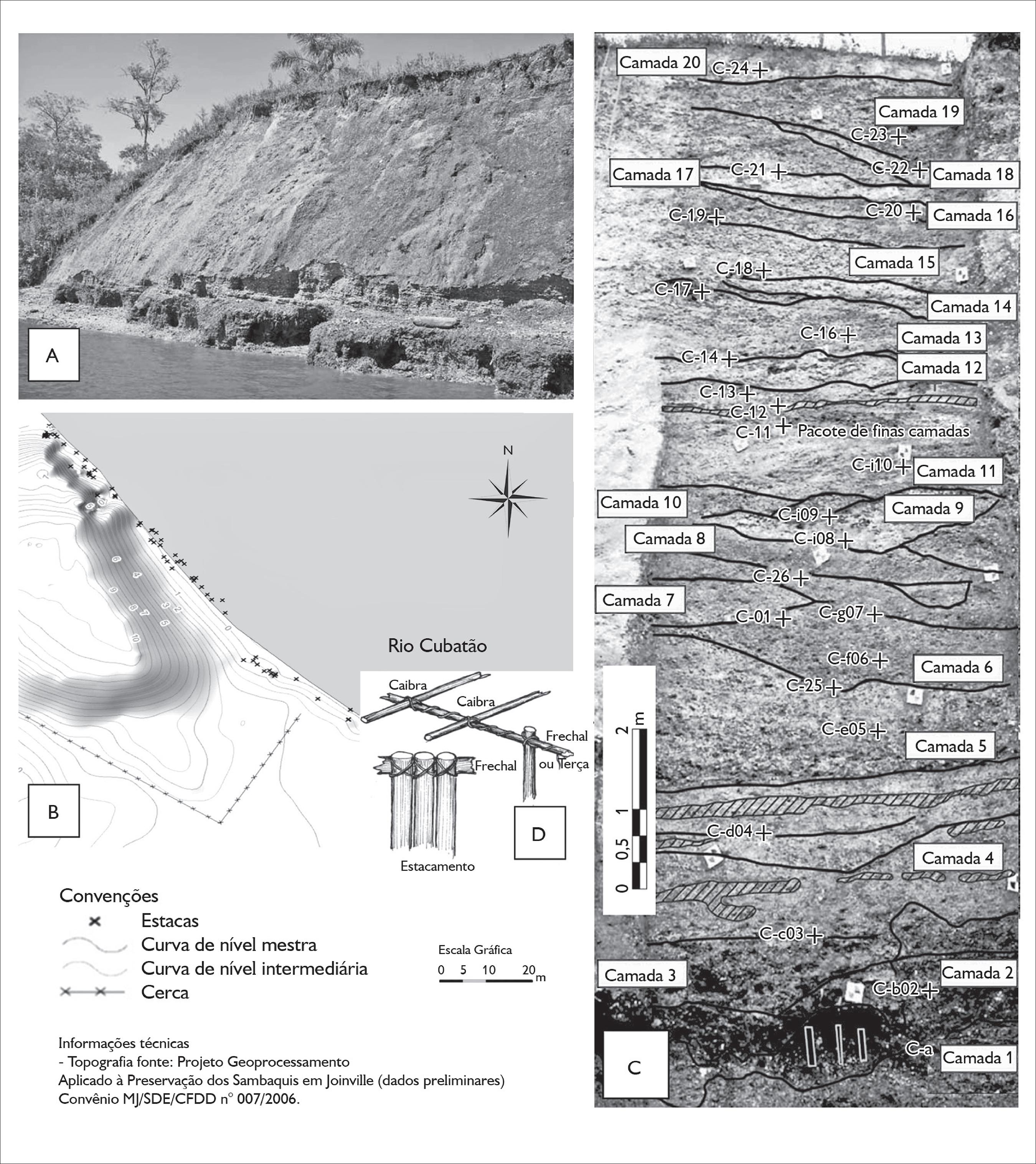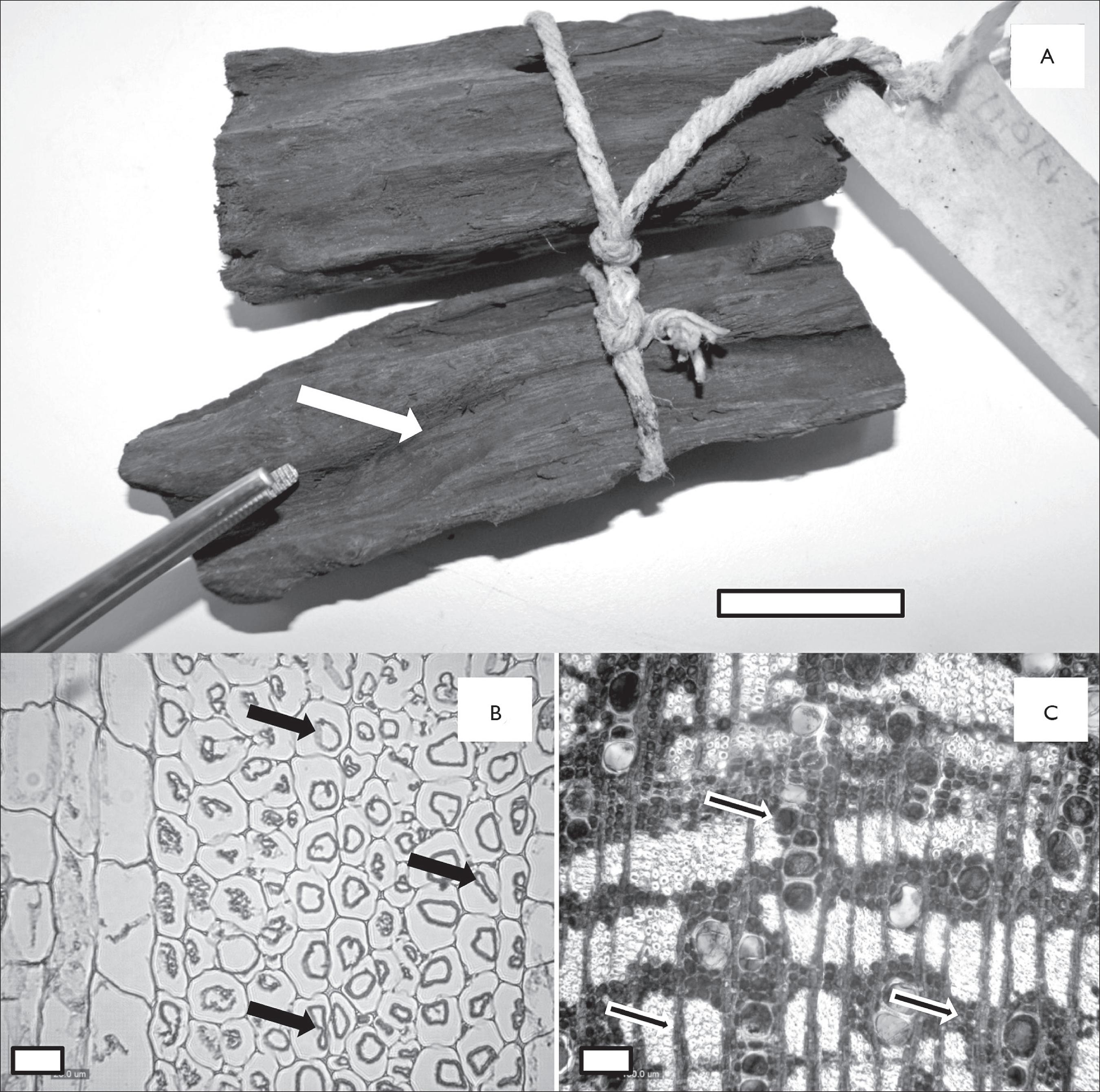Abstract
Woods in nature are rare evidence in archaeological sites sambaqui typology. From the evidence of wood soaked piles at the base of the site, is aimed to know the species and its functionality in the archaeological context of sambaqui Cubatão I, located in the northern region of Joinville, Santa Catarina, and based dated 3480 ± 60 BP. The characterization of the timber was performed by histological preparations and following the terminology proposed by IAWA. The determination of taxa occurred through comparison with wood reference collections. Different timber species were recognized that naturally occur in mangrove environments, lowland rainforest and sand dunes, which included the following taxa: Andira sp. (Fabaceae), Avicennia schaueriana (Acanthaceae), Bauhinia sp. (Fabaceae), Buchenavia sp. (Combretaceae), Handroanthus sp. (Bignoniaceae), Laguncularia racemosa (Combretaceae), Ocotea sp. (Lauraceae), Rhizophora mangle (Rhizophoraceae) Schinus sp. (Anacardiaceae) and Xylopia (Annonaceae). Among the physical properties that confer quality to the identified woods are their high overall basic density, which indicates their potential use as structural elements. Among the possible interpretations, the results suggest the use of wood to construct a platform, possibly designed to increase structural support above the mangrove swamp soils.
Keywords
Cultual heritage; Brazilian archeology; Paleoethnobotany; Sambaqui; Santa Catarina state





